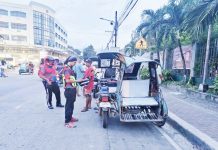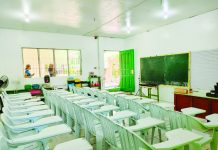
ILOILO – Planting tree seedlings is just half of the goal of the provincial government to improve Iloilo’s forest cover.
The other half is equally important – making sure the seedlings survive and grow.
The provincial government targets to grow 1.5 million seedlings for the whole year.

The Provincial Government Environment and Natural Resources Office (PGENRO) will thus conduct a monitoring and evaluation of the 309,489 seedlings planted in the month of June.
The tree planting last month was in line with the provincial government’s “Tanum Iloilo sa Hunyo 2022” tree growing project.
It kicked off on June 25 during the celebration of Philippine Forestry Service Anniversary and Arbor Day.

Iloilo tree, narra, ipil, toog, kamagong , balayong are among the forest trees planted.
But there were also fruit trees such as jackfruit, star apple (Chrysophyllum cainito), camonsil (Pithecellobium dulce), atis (Annona squamosal), pomelo, coffee, cacao, tambis (Syzygium aqueum), calamansi, indian mango, tamarind, chico, babana, santol, guava, and coconut.
Nine municipalities were able to plant more than 10,000 seedlings. These are Batad (70,215); Barotac Viejo (24,628); San Dionisio (17,800); Ajuy (14,092); Anilao (12,992); Igbaras (12,800); Lemery (12,700); Leon (12,165); and Lambunao (10,949).
Each municipality or barangay was given 1,000 seedlings, a combination of forest trees, fruit trees and mangroves.
The convergence partners (municipalities and barangays, national government agencies, non-government organizations, youth organizations, cooperatives, and the business sector, among others) received 100 seedlings while each household was allocated with five seedlings.
The designated planting areas were suitable for forestland, coastal areas and abandoned fishponds for mangrove planting, riverbanks, open public land, public plazas and eco parks, roadside, school premises, and household backyards, among others. (With a report from LHC, Capitol News/PN)





